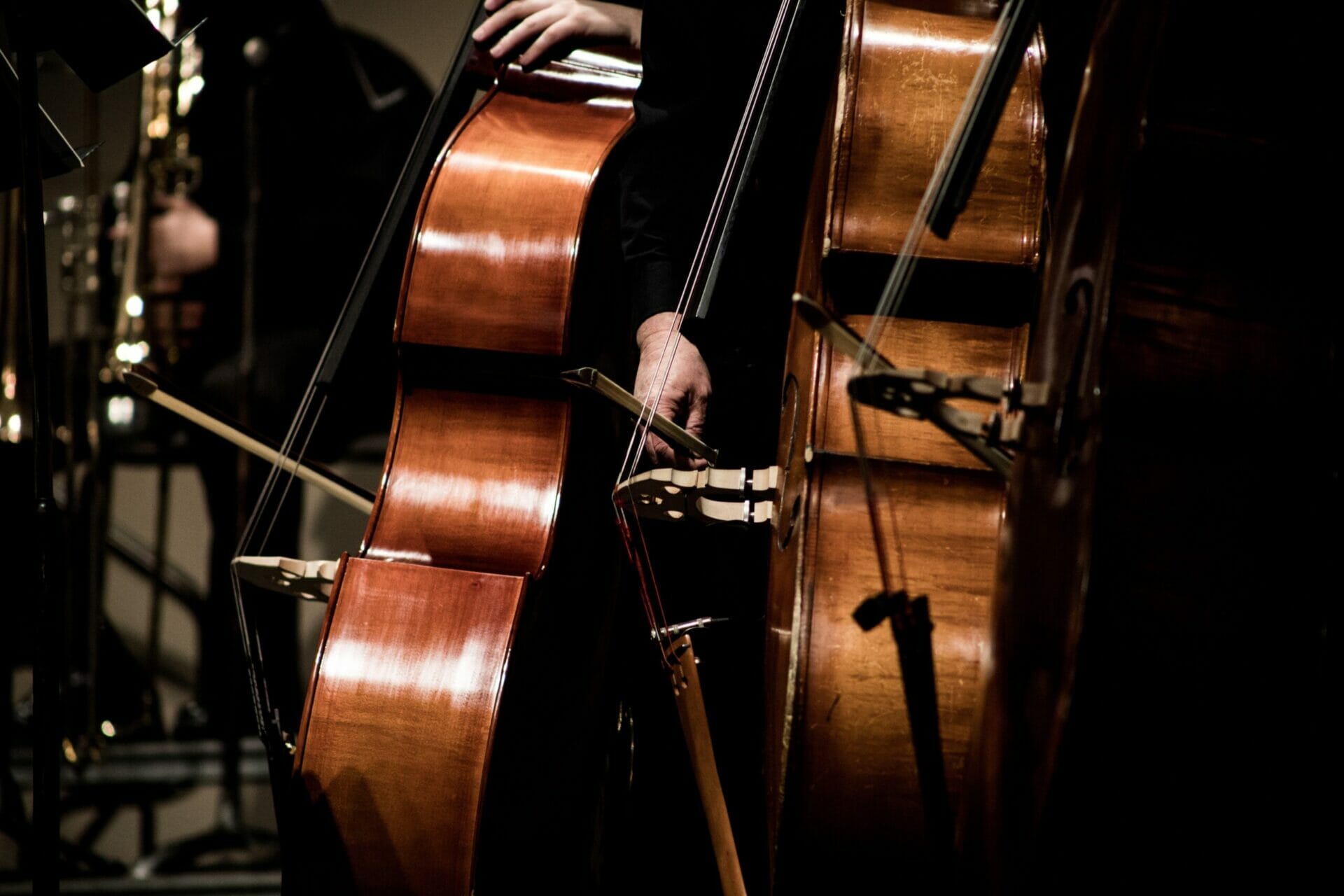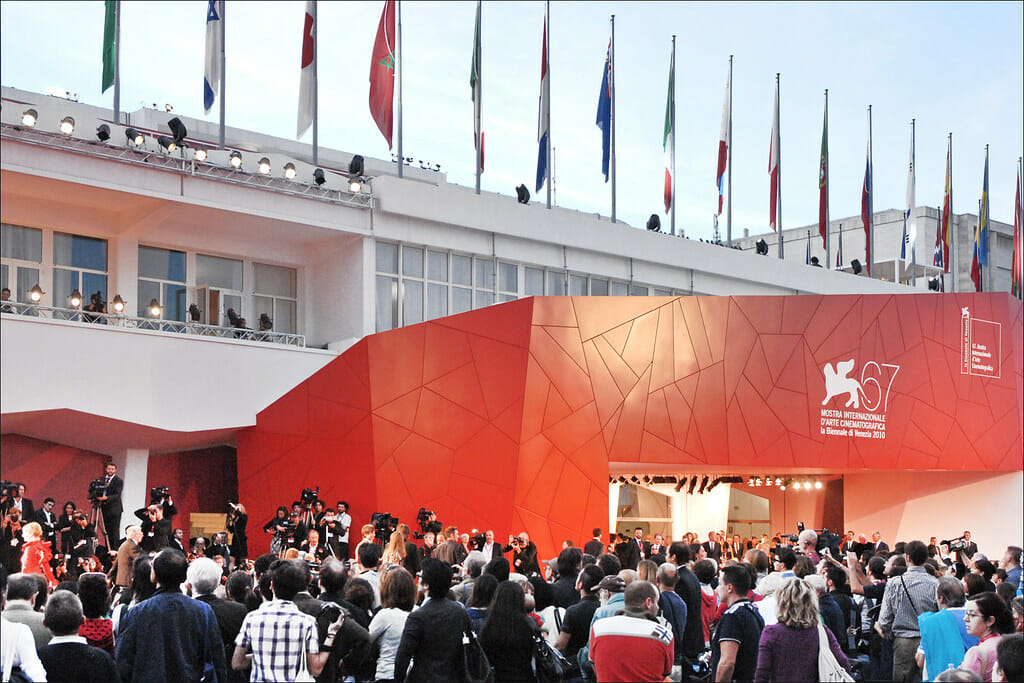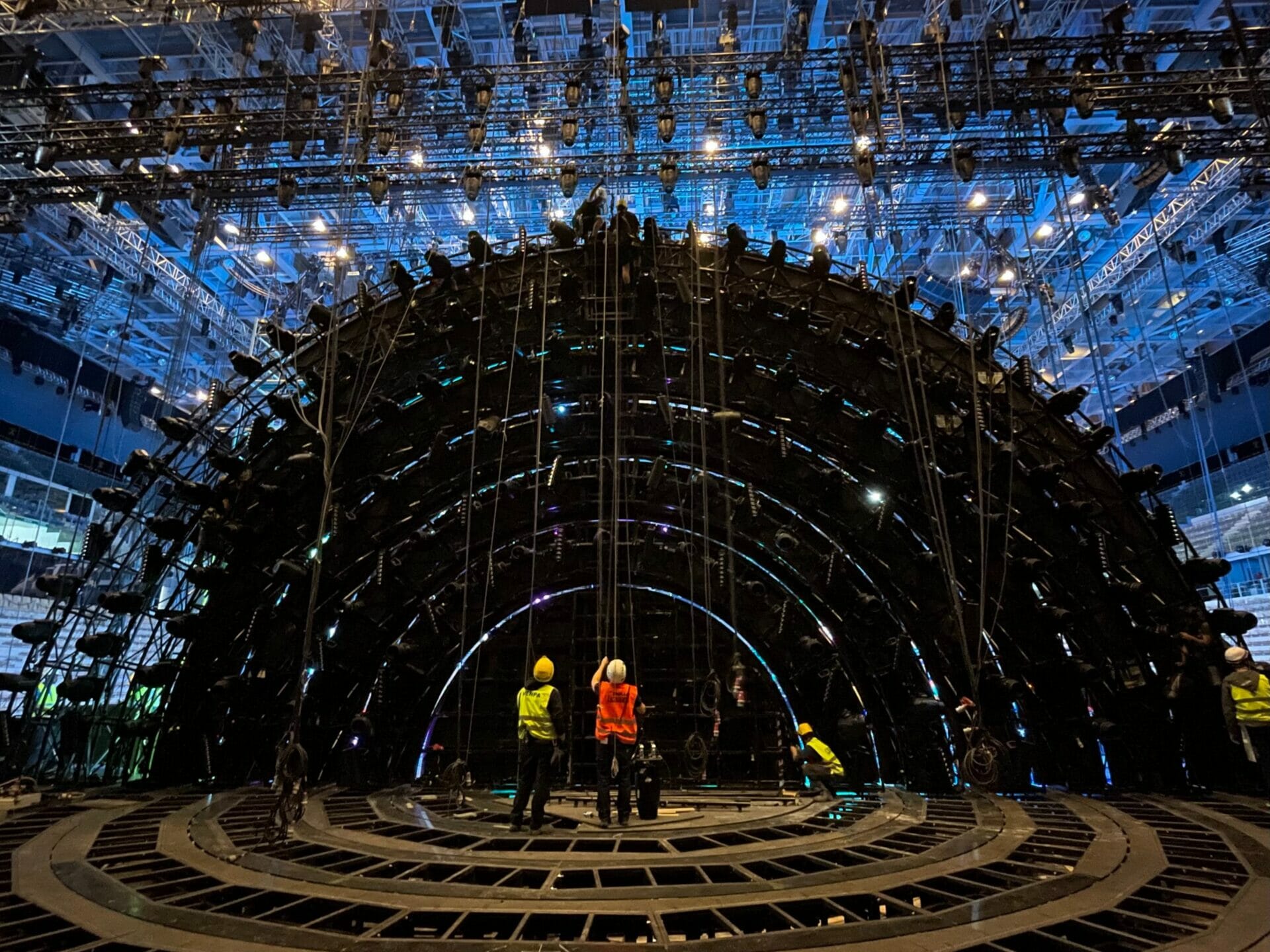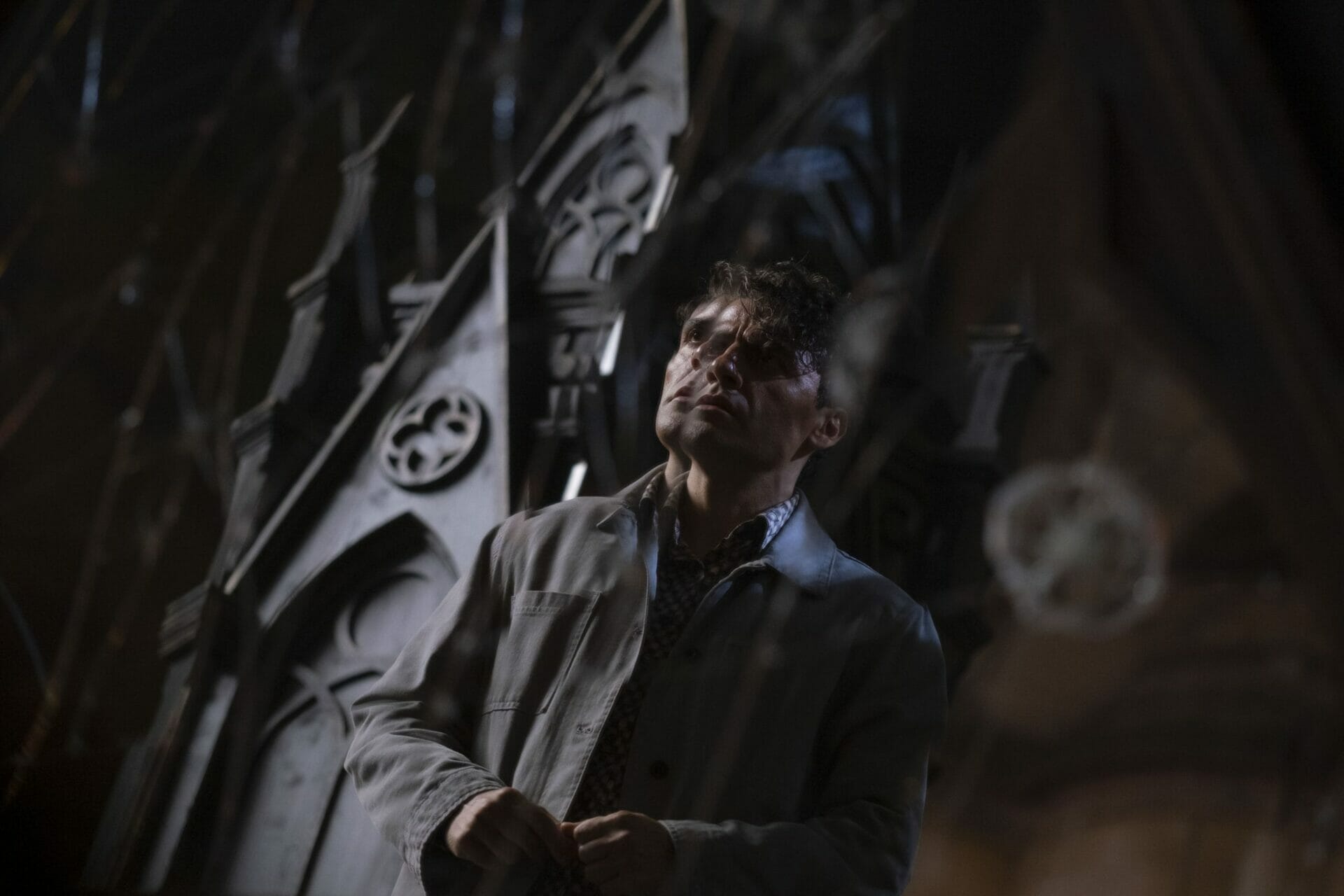
Tár | A Hyperrealistic Performance to Discuss Power in Art
Year
Runtime
Director
Writer
Cinematographer
Production Designer
Music by
Format
Genre
Subgenre
Tár is a psychological drama directed by multiple Oscar-nominated filmmaker Todd Field, that describes the fall from grace of a stellar composer, Lydia Tár, played by Cate Blanchett. At once a subtle yet powerful parody of modern social culture, as well as a cinematic musing on the dynamics of power, the film was nominated for and awarded multiple prizes.
Tár – the surname is a fictionalized invention of Hungarian – features the eponymous heroine, who is the chief conductor of the Berlin Philharmonic Orchestra, a superstar in her own and some other people’s eyes, and yet to her multiple critics, something of a legend in her own lunchtime, primed for a fall. Field examines the power structures present in the professional dynamic of an orchestra, particularly when the person at the top of the hierarchy – in this case, Tár – is a driven and focused individual who stands accused of abuse and favoritism, which eventually leads to her own downfall.
Nobody holds power alone
In an interview with Deadline, the director said that “the character had always lived for me at the top of a very clear power structure, and I’d always thought if I ever did anything with her, it’d be to examine power, to examine how power really functions as a phenomenon and how complicit it is that nobody holds power alone — they’re allowed to have it because there’s a cost-benefit for others.”
At the 95th Academy Awards, Tár earned six major nominations, including Best Picture, Best Director, and Best Actress. For her performance as Lydia Tár, Blanchett won the BAFTA Award for Best Actress in a Leading Role, the Critics’ Choice Movie Award for Best Actress, the Golden Globe Award for Best Actress in a Motion Picture – Drama, and the Volpi Cup for Best Actress at the 79th Venice International Film Festival, where Tár premiered in competition.
However, the film received mixed tone reviews, especially inside the wagon circle of art-house cinema. And it sparked the debate. In London’s Sunday Times, American-Austrian conductor Marin Alsop, affronted, said she was “offended as a woman, offended as a conductor, offended as a lesbian.” Martin Scorsese disagreed, saying “the clouds lifted when I experienced Todd’s film.”
The Rise and Fall of a Star
Lydia Tár (Blanchett) is the first female principal conductor of the Berlin Philharmonic Orchestra. At the height of her musical career, she is also one of the few winners of each category of the Emmy, Grammy, Oscar, and Tony Awards. Tar commutes between New York, where she holds a Master Class at the Juilliard School of Performing Arts, and her home in Berlin, which she shares with her partner Sharon (Nina Hoss). Their lifestyle in the chic urban drab of the German capital is predictable and costly – the electric Tesla to ferry her daughter around, the monochrome wardrobe, the constant transcontinental commuting.
Then Lydia’s success begins to breed envy around her, as up-and-coming talents flock to her for guidance. Tar, an exercise in applied excellence, does not suffer fools gladly, and as her narcissism swells, Lydia becomes increasingly condescending to her assistant Francesca (Noémie Merlant) and other students. In one hard-hitting and polished long take, Lydia confronts a student who tries to frame the works of Johann Sebastian Bach to his own standards. It is a scene that crucifies a generational clash where topics of identity, genre, and art are debated. Particularly for the younger generation, sexual identity is central, but Tár, in a grandiloquent way, explains there is more than that and that the artist must erase their ego.
Trouble is brewing for our Lydia, and time and again, her manipulative schemes push her deeper into lies, paving the way for her fall from grace. Will she become an outcast, condemned to eternity for her mistakes and abuse of power? Or will she find herself on the other side of the tunnel?
A believable psychological portrait of a modern woman?
Tár plays a subtle game with the viewer’s mind. The strategy of the game does not rely on a plot twist induced by the psychological thriller genre, as in Martin Scorsese‘s Shutter Island (2010) or David Fincher‘s Fight Club (1999), to name a few. In comparison, Tár shows scenes that feel truer than life: they are raw, precise, and too meticulous. The viewer feels puzzled by the fact that they do not know this eminent artist. From some rather befuddled viewers, there are even questions online asking whether Lydia Tár exists or not, and an official Lydia Tár website supports the idea that she is a real person. Actually, Tár may look like a biopic, except in some scenes where the absurdity of the situations leaves room for doubt.
Blanchett explains that her character feels very real because her fears and anxieties could affect anyone. The movie sets out to paint a believable portrait of a modern woman at the pinnacle of her life. However, the revelation of her flaws and obsessions shows that she is far from perfect. She is human and cannot escape the ultimate truth, her own mortality. In Blanchett’s words:
“And I think Tár speaks of a moment in a woman’s life when she’s moving inexorably as we all are, towards death. And we try to outrun that very thing. We try to outrun the unpalatable sides of ourselves that we try to hide. The thing I love about the film is that we see things that the character doesn’t see about herself.”
Cate Blanchett in an interview with Variety (transcribed by the author of this article)
Todd Field also invites the viewer to actively fill in and create the rest of the story. He actually welcomes all the plausible endings that the public has speculated on. Arguably, he allows everyone to own the movie because his style is subdued and delicate. The actions are not all grandiose and final, most of them are slow and leave room for imagination. In this way, the viewers can join in.
Technical production and direction
The set is sober and subtle in its choices, which allows the story to emerge more realistically. There is not much artificiality, Tár consists of successive scenes of everyday life in elegant, almost purified settings. A mood conveyed by the Brutalist architecture and the constant gray atmosphere created by the November weather in Berlin.
Blanchett prepared and immersed herself for a year before playing her character, making the performance intense and convincing. Among other things, she learned German and how to play the piano. She also studied the works of composer-conductor Gustav Mahler. All of this preparation amounted to filming the first few scenes of Lydia conducting the orchestra. The timing was imposed on the crew due to the short availability of the Dresden Philharmonic to act as the fictional Berlin Philharmonic. This daunting situation was actually a great opportunity for the crew, as revealed in an interview with Variety. For Blanchett, it was a gift because she got to play what Lydia loved and feared losing most. For Field, it was a chance for Blanchett to “understand the power, the majesty, and the potential pitfalls” of conducting a professional orchestra.
The hyperrealist focus on power relations
To some extent, in Tár, the cinematic style is comparable to an artistic movement, hyperrealism, which creates illusions by enhancing reality. Going beyond photography’s ability to capture reality, hyperrealism adds focus and reflects on the visual, social, and cultural aspects of everyday life. Indeed, the movie is hyper-specific about the world constructed around Lydia. For example, her suits are made by a German tailor, Egon Brandstetter, who plays himself. At the New Yorker Festival, she is interviewed by the real writer Adam Gopnik, who works for the magazine.
In this case, Tár delves into the socio-political struggles of the movie industry. Repeated situations illustrate the abusive attitude Lydia takes towards young aspiring women. The scenes are not unfamiliar, as they recall media headlines of harassment stories that sparked the #MeToo movement. For Noémie Merlant, making the woman the perpetrator made her nervous. She was afraid “to talk about the dynamic of power set in a patriarchal world, but with women having the power…” However, she thought it might create some distance between these issues and allow her to question them further. Like hyperrealism, making the abuser a woman is an artistic intervention that allows the phenomenon of abuse of power to be examined more closely. She discarded the main narrative of the stereotypical white male and instead focused on the dynamics of manipulation and corruption.
A critique of cultural stratification
In addition to examining the dynamics of power from a gender perspective, there is a struggle between the interests of different groups of people. The movie can be criticized for being pretentious from the start and thus leaving the viewers out of the loop. However, one could argue that the illusion of reality is maintained in part because the world of classical music is perceived as pompous and reserved for connoisseurs.
According to French sociologist Pierre Bourdieu‘s theory, individuals from higher-status groups are better equipped to understand high art because they have inherited their tastes through the transmission of “cultural capital” over generations. These individuals, in turn, embrace these forms of art to affirm their membership in higher circles and to distinguish their tastes from those of the less refined. Thus, it is easy to imagine that Lydia Tár’s name is known only by a privileged few.
In contrast, Lydia’s talent is ultimately used to satisfy a different kind of fantasy. It could be interpreted that she has failed because she is no longer working in a prestigious orchestra. When Blanchett first read the ending, she found herself “with the tragedy, the descent”. However, when she performed the final parts, she said she had never been so elated and full of joy. The radical change in situations questions the absurdity of the arbitrary distinction that places other forms of entertainment, such as video games, as part of popular culture. Tár’s ability to perform in these distinctive contexts cannot make any form of expression less valuable. Field allows viewers to make different interpretations of the story. They forge new narratives, perhaps reconciling the story with ideologies and social and artistic movements.
Tag
Buy a ☕ for Hypercritic










